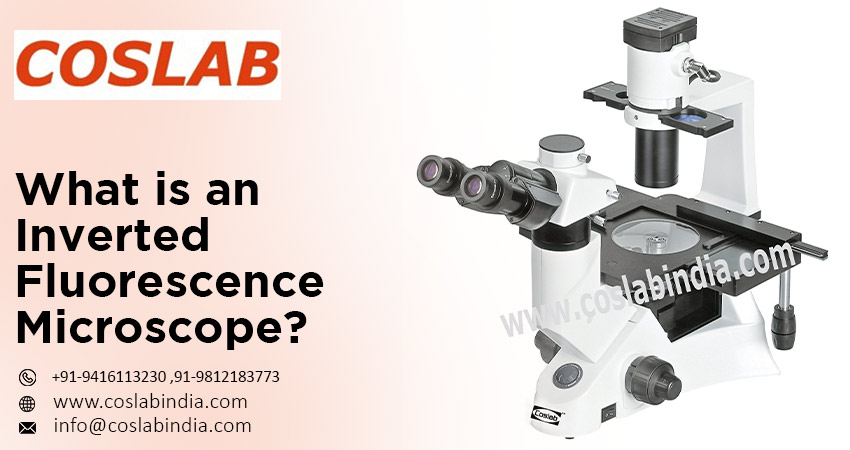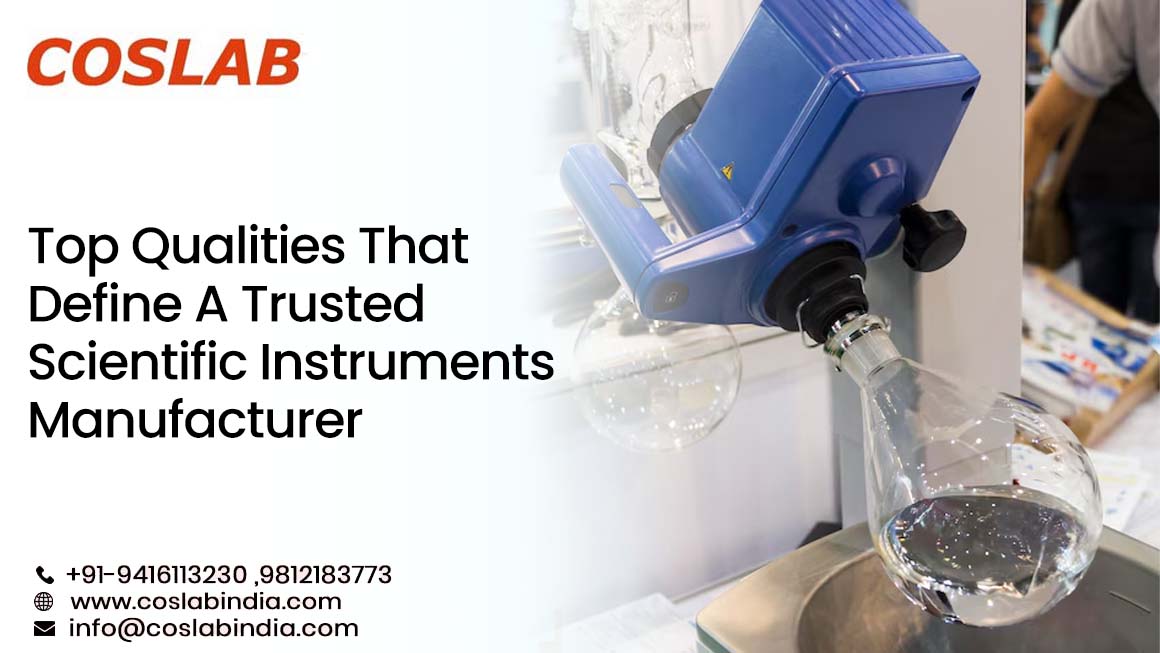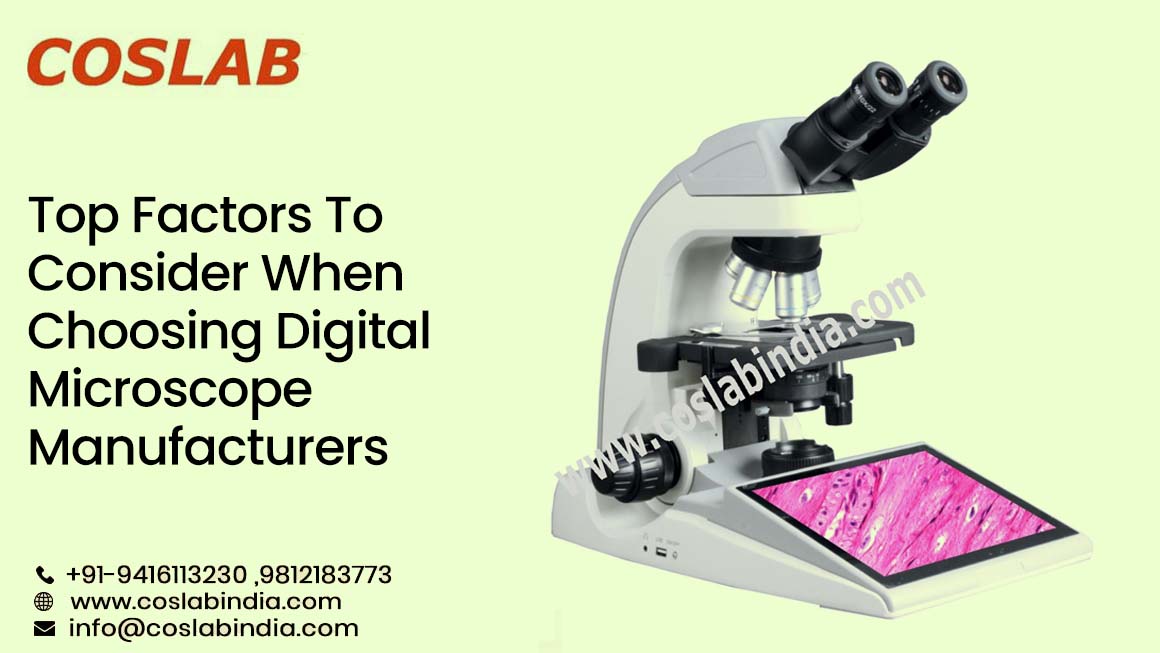
What Is An Inverted Fluorescence Microscope?
An Inverted fluorescence microscope is used to look at things like living cells at the bottom of a Petri dish or tissue culture by using fluorescence. Different microscopes have parts similar to those in the Inverted Fluorescent Microscope. The only difference is that the parts are arranged inverted.
A halogen lamp is used to put light on the specimen. A dichroic mirror reflects some wavelengths of light when it comes into the microscope while letting others pass through. The dichroic mirror bounces the ultraviolet light back up to the specimen. The UV light makes the molecules in the specimen fluoresce, and the objective lens collects the light with this wavelength.
Uses of Inverted Fluorescence Microscope
- 1. Cellular Imaging: These microscopes are important for studying living cells. They provide a clear view of cell structures and activities by using fluorescent dyes that make specific cell components glow.
- 2. Observing Thick Samples: Unlike traditional microscopes, the inverted design allows for examining thicker samples. This is beneficial for observing 3D cell cultures or tissues.
- 3. Live Cell Imaging: Inverted fluorescence microscopy excels in capturing dynamic processes in live cells. Researchers can monitor cellular events over time, providing valuable insights into cell behavior.
- 4. Minimizing Photo-bleaching: These microscopes minimize photo-bleaching, a process where fluorescent dyes lose their brightness over time. This feature ensures longer and clearer observations.
- 5. Compatibility with Culture Dishes: Inverted microscopes are designed to accommodate culture dishes and flasks, making them suitable for observing cells in their natural environment, such as in a cell culture.
Specifications of Inverted Fluorescence Microscope
The microscope is equipped with WF 10X eyepieces, providing a wide and clear view with a diameter of 20mm. The eyepiece tube is trinocular and inclined at 30 degrees, allowing for comfortable viewing and facilitating photography with 100% image light.
For objective lenses, it features long working distance plan achromatic objectives, including 10X, 25X, and 40X options. Additionally, phase contrast objectives with the same magnifications are available, enhancing the microscope's versatility for varied applications.
The focus system is coaxial with coarse/fine adjustments, ensuring precise focusing with a minimum division of 2.0μm. The nosepiece is quintuple, providing easy objective selection with ball-bearing inner locating.
The working stage is double-layer mechanical, sized at 224mm X 208mm, and offers a moving range of 112mm X 79mm. This stage accommodates various specimen sizes, making it versatile for different research needs.
Filters, such as blue and green filters, are included for adjusting the lighting conditions. The specimen shelf is adaptable, allowing for the installation of culture utensils with dimensions ranging from 68 mm x 29 mm to 128 mm x 85 mm.
The microscope is equipped with a reflected fluorescence system, featuring a 100W/DC mercury lamp house with a power supply unit suitable for 110V or 220V. It also includes fluorescence filter systems with different exciton wavelengths, enhancing its capability for fluorescence microscopy.
To facilitate phase contrast microscopy, the microscope is equipped with a turn plate unit including a centering telescope and a condenser rack with adjustable NA (Numerical Aperture) and a working distance of 50mm. This comprehensive set of features makes the microscope a versatile tool for various biological research applications.
Precautions one should take
When setting up, assembling, or doing maintenance, always turn off the power to ensure safety. Spills on the device may lead to malfunctions, overheating, or electric shock, so handle with care. When carrying, firmly grasp the microscope by the bottom front and rear recesses. To maintain optical clarity, be cautious of scratches on lenses and filters. Dispose of contaminated slides following facility protocols to address biohazard concerns. Keep the microscope in an environment with temperatures between 0 to 40°C and humidity below 85%. Handle the device gently to avoid shocks that could affect accuracy.
Concluding It!
If you are looking for the best Inverted Fluorescence Microscope Manufacturers, Coslab India is one of the well-named companies with top-notch quality products and services. If you are facing issues while going through our products and services, please contact us!
Visit us: www.coslabindia.com
Office Address: 3474, Shantipath, Ram Bagh Road, Ambala Cantt - 133001 (Haryana), India
Factory Address: 58, HSIIDC, Industrial Estate, Ambala Cantt - 133006 (Haryana), India
Email: info@coslabindia.com, coslabindia@rediffmail.com
Phone: +91-9416113230, +91-9812183773
Most Searched Keywords
- • Inverted Fluorescence Microscope Manufacturers
- • Top Inverted Fluorescence Microscope Manufacturers
- • Best Inverted Fluorescence Microscope Manufacturers
- • Inverted Fluorescence Microscope Manufacturers in India

Top Qualities That Define A Trusted Scientific Instruments Manufacturer
View More

A Complete Guide To Selecting The Best Lab Glassware Manufacturer in India
View More

Choosing The Right Lab Deep Freezer Manufacturers For Reliable Performance
View More

Top Factors to Consider When Choosing Digital Microscope Manufacturers
View More
Subscribe To Our Newsletter
Stay in touch with us to get latest news and discount coupons

